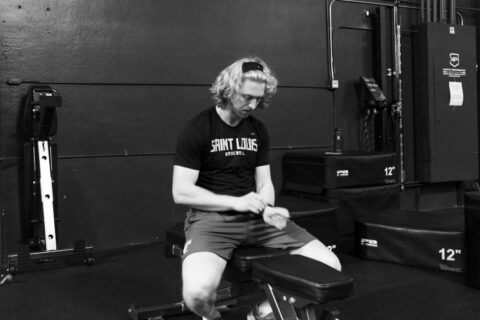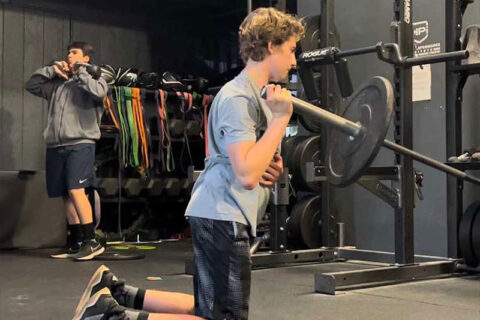Force Plates: KPI’s New Weapon of Development
In March of 2021, we decided to make a huge investment and buy force plates. It was a little of a shot in the dark, as we did not know much about them and were unsure exactly how they would fit into our thriving player development system. But now that we are over 5 months in with our force plates, and have logged over 20,000 jumps, we can say that our force plates are currently a huge differentiator for us. In the future, we plan on using our force plates as the hub between skill and strength work and be the core of everything we do.
Force plates are raised plates that lie on the ground and measure the biomechanics of the athletes. Overly simplified, force plates allow us to look under the hood and gather objective data on the athlete’s central nervous system. We are able to see how an athlete’s hard-wired and how their body is predisposed to certain qualities that even the most advanced physical assessment could not possibly screen.
When we started with the force plates we did not use them at all for anything but gathering data. Our goal was to get to 6,000 jumps and then start looking for trends. We got to 6,000 jumps and we were able to establish a mean for the different metrics we were using. The important part of the mean we established is that it was of our population. We have different groups set up in our software between ages, skill level, and softball/baseball. The reason this is so important is that we gather data and programs based on what is happening in our facility, not what is happening in other places or populations. This allows us to have an incredible perspective on the individual athlete at KPI and show them where they are at in comparison to their peers at the facility.
The next step for us was to start using the force plate data on the strength side. We identified the areas that we were going to value and that measured different reactions within the central nervous system. We then evaluated each athlete and analyzed their most deficient metric and how far away they were from the mean within their groups. We took that information and we built strength programs around that personalized information and so far the results on health and strength have been amazing. We will release a full report on the progress after our summer program ends.
We have also started using the force plates to monitor the health of the athletes that train at KPI. We can compare their jumps to past jumps and notice deficiencies in their data. Something we have begun to pay close attention to, particularly in pitchers, is the amount of time it takes for them to change directions. We are noticing that some of the pitchers that have had a heavy load for their high school and Summer teams are taking much longer to change directions in their jumps. This tells us their body is overstressed and not able to create the tension it normally would propel the athlete in the opposite direction quicker. We are then taking that data and adjusting their strength and throwing programs accordingly. We monitor their progress on the force plates and are able to evaluate how and when they are getting their strength back. Once we feel comfortable about their force plate metrics, we can return them to normal programming.
In the future, we plan on extending our force plates to the pitcher’s mound and the batter’s box. We have already started to crunch the data and look for correlations and trends in our hitting metrics when compared to the force plate readings. We plan on doing the same for pitching metrics soon.
We are just scratching the surface by using force plates as the hub of player development at KPI. They have taken our approach of using data to drive individualized training to a whole other level. It is our goal to have force plates in both the mound and batter’s box by the end of the year. Once that is complete, we will be able to unleash a system that is completely objective in nature and something that is incredibly unique in the area of baseball and softball athlete development.
““


